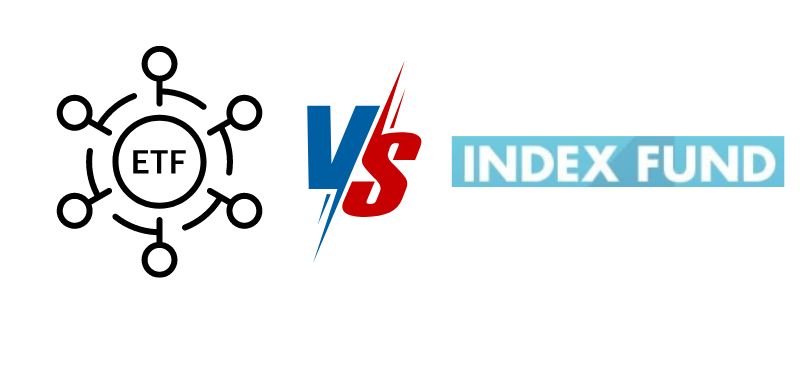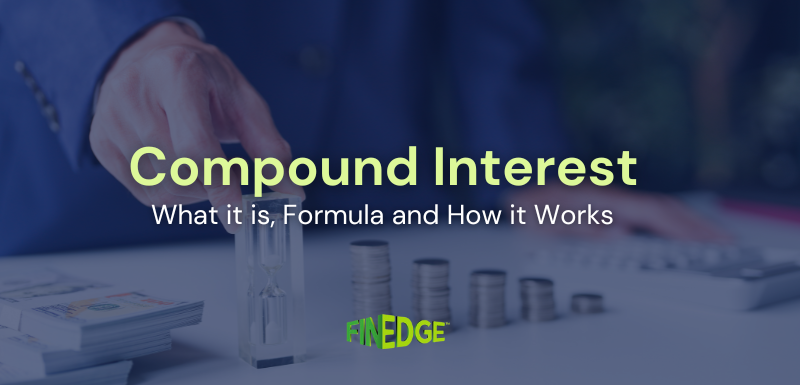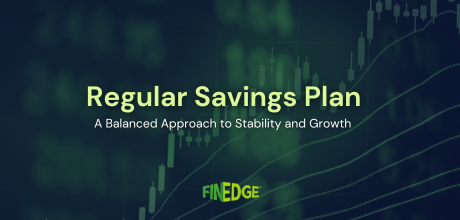ETFs Versus Index Funds: What Are the Differences, and Which One Should You Choose?

In the last few years, there has been a rise in passive investing due to factors like diversification, low costs, wide availability and choice of passive funds, ease of investing, etc. When it comes to passive investing, there are two ways of doing it. Exchange traded funds (ETFs) and index funds. In this article, we will understand what are ETFs and index funds, the differences, and which one you should choose.
What Is ETF Fund?
An Exchange Traded Fund (ETF) is a financial security/product mutual fund houses offer. It tracks an index, commodity, or basket of assets and mirrors their performance. For example, an equity ETF may track the performance of an equity index like the Nifty 50. We have ETFs that track the performance of commodities like gold, silver, etc.
The objective of an ETF is to mirror or replicate the performance of the benchmark index and not outperform it. The units of an ETF are listed on a stock exchange like the NSE. You can buy and sell units of the ETF during market trading hours. The price of an ETF unit is based on the Net Asset Value (NAV). The buying and selling of ETF units may happen at the NAV, below or above NAV, depending on the demand and supply.
Now that we understand what is an ETF fund, let us look at the benefits of ETF funds.
Benefits of ETF Funds
Some of the benefits of ETFs include the following.
1) Diversification
Depending on the ETF chosen, it can provide you with a diversified basket of securities. For example, a Nifty 50 ETF provides you exposure to a diversified basket of 50 large-cap securities spread across various sectors of the economy. Similarly, a Midcap 150 ETF and Smallcap 250 ETF provide exposure to a diversified basket of 150 mid-cap and 250 small-cap securities belonging to various sectors.
2) Free From Human Bias
An ETF invests in all the constituents of the benchmark index as per their weightage in the index. The securities are held till they remain a part of the index. The fund manager has no say in the securities to be bought, the price, quantity and the holding period. Similarly, the fund manager has no say in the securities to be sold, the price, quantity and the holding period. Thus, an ETF is free from the fund manager bias.
3) Low Cost
In the earlier section, we discussed how an ETF is free from human bias. As a result, the fund manager doesn’t need to manage a research team to decide which securities are to be bought and sold. Also, the ETF securities are listed on the stock exchange and the buying/selling is done by investors through the exchange. Thus, the expenses of an ETF are low, resulting in a low expense ratio compared to active mutual funds.
4) Ideal for Buy and Hold Long-Term Investors
In an ETF, the fund manager buys the securities of the benchmark index and holds them till they are a part of the index. The securities are sold when they are excluded from the index as part of the index rebalancing. Thus, ETFs are ideal for buy and hold strategy long-term investors.
What Is Index Fund?
An index fund tracks the performance of a benchmark index. It invests in all the index constituents as per their weightage in the index. The objective is to replicate or mirror the performance of the benchmark index. The returns are similar to the benchmark index after factoring in the tracking error and expense ratio.
Mutual fund houses offer index funds on various broad market indices, sectoral/thematic indices, smart beta indices, debt indices, etc.
Now that we understand what is an index fund, let us look at the benefits of index funds.
Benefits of Index Funds
As discussed in the earlier section, some of the benefits of index funds are similar to those of ETFs. These include diversification, low cost, free from human bias, etc. Some other benefits of index funds include they can be bought and redeemed at NAV through the fund house unlike ETFs that are traded on the stock exchanges. Also, there is no need for a demat account for index funds, resulting in savings of costs related to demat accounts like account opening fee, annual maintenance fee, brokerage on buying and selling of units, etc.
Now that we understand what are ETFs and index funds and their benefits, let us look at the differences between the two.
ETF vs Index Fund - What’s the Difference?
|
ETFs |
Index Funds |
|
The units can be bought and sold through the stock exchanges. |
The units can be bought and redeemed through the mutual fund house. |
|
A demat account is required. An investor has to bear the demat account costs like account opening fee, annual maintenance fee, brokerage charges, etc. |
There is no need for a demat account. Hence, the investor doesn’t need to bear the demat account costs. |
|
The units may be bought at the NAV price, below or above the NAV price, depending on demand and supply. |
The units are bought and redeemed at the NAV price. |
|
As ETF units are exchange-traded, liquidity can be an issue. |
Liquidity is not an issue as index fund units are bought and redeemed with the fund house. |
|
A specified number of units are issued at the time of NFO. Once listed on the exchange, the trading happens in these limited units. |
Whenever an investor purchases units, the AMC creates new units. Whenever an investor redeems units, the AMC extinguishes the units. So, the number of units keeps changing depending on the units bought and redeemed by investors. |
|
Every time the units have to be bought; it has to be done manually. There is no SIP option. |
The SIP option is available. The investor can invest a specified amount every month. |
|
The minimum for every purchase and sale transaction is one unit and multiples. |
An investor can buy and redeem fractional units depending on the transaction amount. |
|
The expense ratio of ETFs is usually lower than index funds. However, there are additional costs related to the demat account, as discussed in the earlier section. |
The index fund expense ratio may be slightly higher than ETFs. |
Now that we understand the difference between ETF and index fund, let us look at how to invest in index funds.
How to Invest in Index Funds?
You can invest in index funds through the AMC or intermediary fintech websites/apps. When you invest, the AMC creates a folio account. You can make one-time ad-hoc investments or start a SIP for regular investments. The purchase and redemption can be done at NAV at any time.
For every purchase, your bank account is debited and the equivalent amount scheme units are credited to your folio account. The AMC sends you the transaction statement and periodic portfolio statements. For every redemption, your folio account is debited with the units, and your bank account is credited with the redemption amount. The redemption can be done based on the number of units or the amount required. Your capital gain is the difference between the NAV at which you redeemed the units and the NAV at which you bought the units.
How to Invest in ETF Funds?
To invest in ETFs, you will need a demat account. Your broker can provide you with a trading and demat account or a 3-in-1 trading, demat, and banking account. To buy or sell ETF units, you will have to login to your trading account through the broker’s website or app. Once you log in, you can buy or sell ETF units through the stock exchange during market trading hours.
When you buy ETF units, your trading/bank account is debited, and the equivalent amount of ETF units is credited to your demat account. When you sell ETF units, your demat account is debited with the ETF units, and the equivalent amount is credited to your trading/bank account. Your capital gain is the difference between the sale price and purchase price of the ETF units.
ETF vs Index Funds: Which Is Better?
Let us understand ETF vs index funds: Which is better? It depends on your need. If you are looking to buy units during market trading hours to take advantage of the fall in prices or sell units to take advantage of the rise in price, you may consider ETFs. However, every transaction has to be done manually, and there is no SIP option.
If you are looking to invest for the long term through SIPs, you may consider index funds. With SIPs, you can invest a specified amount every month in a specified index fund(s) for a specified investment time horizon. SIP investments in index funds can help you achieve long-term financial goals and achieve financial freedom.
FAQ's
What Are the Different Types of ETFs and Index Funds Available in India?
In equities, we have various ETFs and index funds based on:
- Diversified indices like Nifty 50, Nifty Next 50, Nifty 100, Nifty Midcap 150, Nifty Smallcap 250, Nifty Microcap 250, Nifty 500, etc.
- Sectoral/thematic indices like Bank Nifty, Nifty IT, Nifty India Defence, Nifty PSE, etc.
- Smart beta indices like Nifty 200 Momentum 30, Nifty 50 Value 20, Nifty 100 Low Volatility 30, etc.
- ETFs based on gold, silver, etc. Fund of Funds (FoFs) based on these ETFs
- ETFs and index funds based on various debt indices, etc.
What Happens to an Index Fund When a Specific Stock Is Excluded, and Another Stock Is Included?
In the case of most indices, the rebalancing happens quarterly or half-yearly. During the rebalancing, certain stock(s) may be excluded, and in its place other stock(s) may be included. Whenever that happens, the index fund manager sells the stock(s) excluded from the index. In its place, the fund manager buys the new stock(s) included. The shares bought are as per the weightage of the new stock(s) in the index.
Your Investing Experts
Relevant Articles
The Power of Compounding: How Small Investments Turn into Big Wealth
Compounding is the single most powerful force behind long-term wealth creation. It rewards patience, discipline, and consistency more than any short-term strategy ever can. If you want your investments to grow exponentially instead of linearly, compounding must be at the centre of your approach.
Regular Savings Plan: A Balanced Approach to Stability and Growth
Not every investment in a portfolio is meant to maximise returns. Some are meant to preserve capital, manage volatility, and provide predictability. A regular savings plan serves exactly this role. It is designed for investors who want a more measured approach where stability takes priority, and growth plays a supporting role rather than the lead.
From Coffee to Crorepati: Small Lifestyle Tweaks Gen Z Can Make to Start Investing Early
Gen Z is often told to “stop buying coffee” if they want to invest. But that misses the point. Building wealth isn’t about sacrificing everything you enjoy. It’s about understanding how small, everyday decisions shape long-term habits. Starting early even with modest amounts can quietly make a meaningful difference over time.
.png)


.png)